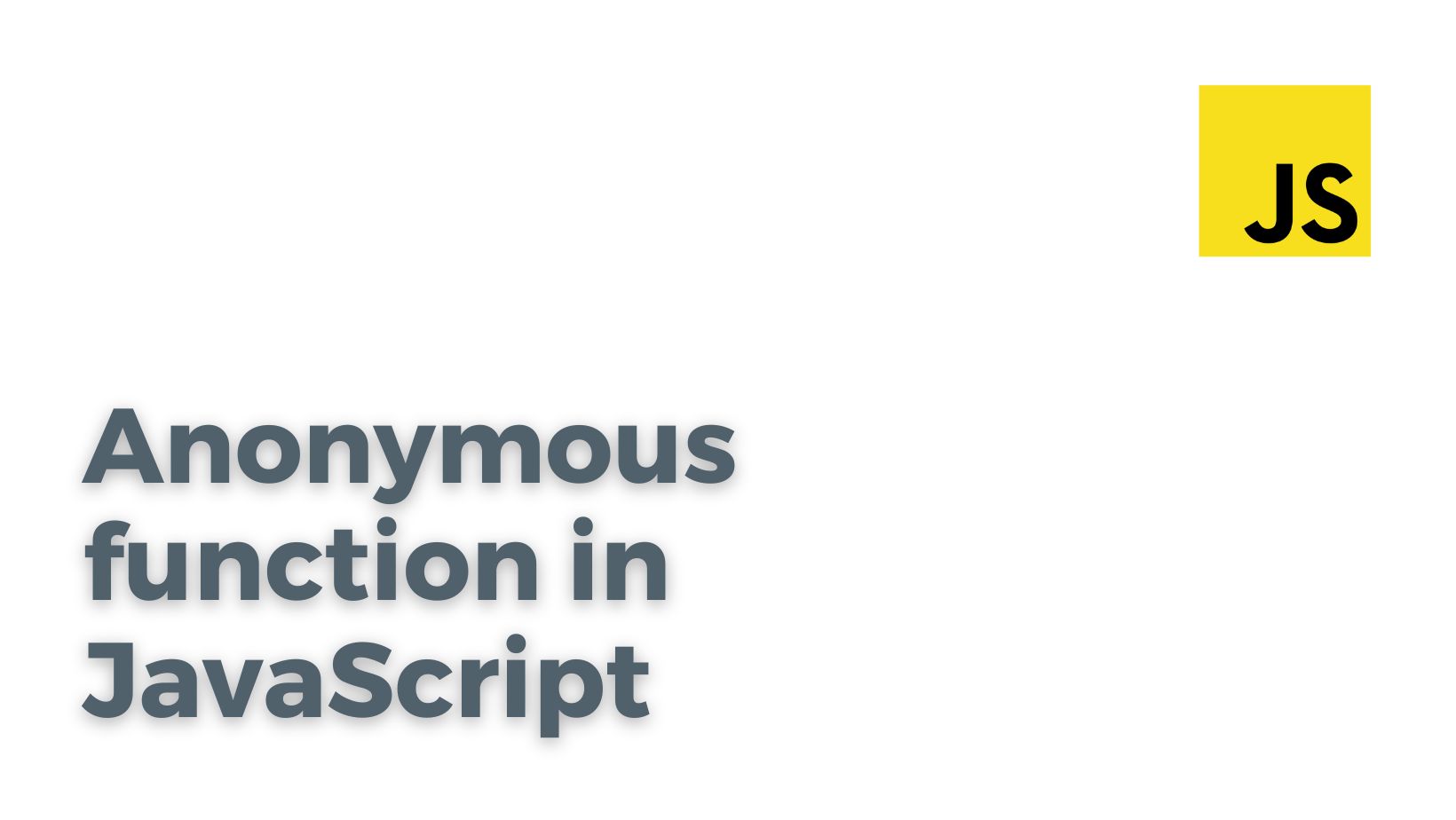
In JavaScript, an anonymous function is a function that has no name. It is commonly referred to as a "lambda function" or "arrow function" because of the syntax used to define it. An anonymous function is often used as an inline function or as a callback function passed to another function as an argument.
There are many ways in which anonymous functions can be used in JavaScript. Here are some typical examples:
- Inline function
Anonymous functions can be used to define inline functions without giving them a name. This can make your code more concise and easier to read. For example:
// define an anonymous inline function
var myArray = [1, 2, 3].map(function(n) {
return n * 2;
});
console.log(myArray); // outputs: [2, 4, 6]
- Callback function
Anonymous functions can be used as callback functions, passed to another function as an argument and executed when a certain event occurs. For example:
// define an anonymous function to be used as a callback
var myFunction = function() {
console.log("This function is called as a callback!");
}
// pass the anonymous function as a callback to another function
setTimeout(myFunction, 1000); // outputs: "This function is called as a callback!"
- Arrow function
Anonymous functions can be defined using the arrow function syntax, a shorthand syntax for defining anonymous functions in JavaScript. For example:
// define an anonymous arrow function
var myFunction = () => {
console.log("This is an anonymous arrow function!");
}
// call the anonymous function
myFunction(); // outputs: "This is an anonymous arrow function!"
- Closure
Anonymous functions can be used to create closures, which have access to variables in their lexical scope, even when executed outside of that scope. For example:
// define a variable to be used in a closure
var myValue = "Hello, world!";
// define an anonymous function that creates a closure
var myFunction = function() {
return function() {
console.log(myValue);
}
}
// call the anonymous function and store the returned closure
var myClosure = myFunction();
// call the closure
myClosure(); // outputs: "Hello, world!"
Anonymous functions are useful in JavaScript because they can be defined and used inline without declaring a named function. This can make code more concise and easier to read. Additionally, anonymous functions can be passed as arguments to other functions, allowing them to be used as callback functions.
The best practice to use anonymous functions in JavaScript
As with any programming construct, there is no one "best" way to use anonymous functions in JavaScript. The best approach will depend on your code's specific context and requirements. However, there are some general best practices that you can follow when using anonymous functions in JavaScript:
-
Use anonymous functions when you define a function inline without giving it a name. This can make your code more concise and easier to read.
-
Use anonymous functions as callback functions when they are only going to be used in a single place. This can help to avoid cluttering your code with unnecessary named functions.
-
Avoid using anonymous functions in place of named functions when the function is going to be called multiple times or used in various places. In these cases, it is better to define a named function, which can be more easily reused and read.
-
When using anonymous functions as callback functions, consider using arrow functions to make your code more concise and readable. Arrow functions are a shorthand syntax for defining anonymous functions in JavaScript.
-
Be sure to use anonymous functions with care, and avoid creating deeply nested or overly complex anonymous functions, as this can make your code difficult to read and maintain.
Pros
-
Anonymous functions can make your code more concise and easier to read, mainly when used as inline or callback functions.
-
Anonymous functions can be defined and used inline without declaring a named function. This can save time and make your code more flexible.
-
Anonymous functions can be passed as arguments to other functions, allowing them to be used as callback functions.
-
Arrow functions, a shorthand syntax for defining anonymous functions, can make your code even more concise and readable.
Cons
-
Anonymous functions can make your code more difficult to read and understand, especially if they are deeply nested or overly complex.
-
Anonymous functions can be challenging to debug and maintain as they do not have a named reference.
-
Anonymous functions cannot be easily reused, as they are not bound to a named reference.
-
In some cases, anonymous functions may not be as performant as named functions, as the JavaScript engine cannot optimize them similarly.

